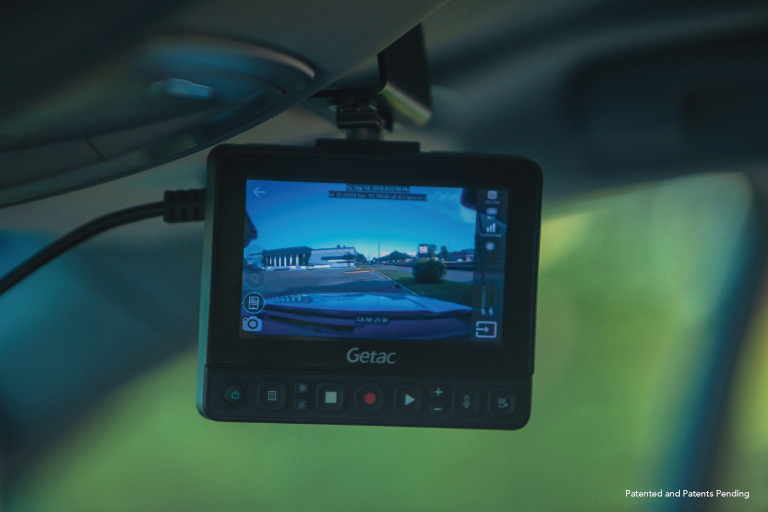As one of the leading rugged computer providers, Getac offers extensive rugged computing product lines and serves a wide range of vertical markets.

Getac Select
A combination of rugged computing devices, software, accessories and professional services in a purposeful range of specifically tailored solutions.
Getac Video Solutions
Video capture, evidence management, rugged hardware and robust software solutions for law enforcement and other industries.
Defense
Mission-critical COTS computing that delivers high powered processing and reliability in operational environments
Public Safety
Law Enforcement, EMS, Fire & Rescue applications
Utilities
Smart Meter Reading and Installation, On-site Safety, Utility Asset Management, Workforce Management for Utilities, Mobile GIS, Surveying and Mapping
Transportation & Logistics
Railroad Management, Airport Management, Port Management, Long-haul Delivery Fleet Management, Warehouse Materials Handling
Industrial Manufacturing
Industrial Programming and Robotic Control, Facility management, Compliance and Inspections, Workforce Management, Inventory and Warehouse Management, Factory Automation and Plant Monitoring, EAM and CMMS Solutions.
Automotive
Optimized Rugged Mobile Solutions to drive a smarter approach throughout the automotive value-chain.
Natural Resources
Mining, Forestry and Construction applications
Oil & Gas
Remote Support, Asset Management, Field Data Analysis, Workplace Safety
Even as little as ten years ago, it was rare to have video evidence in a court case.1 A lack of video surveillance and the integrated systems needed to access that data left law enforcement as well as the public vulnerable. Now, it is estimated that 80% of crimes include some sort of video evidence.1
With the ever-evolving increase of technology and tools, law enforcement agencies have been able to implement technologies and software that have helped them do their job more efficiently. There are a variety of places that these videos come from, creating vast amounts of data, including video evidence from body-worn cameras, in-car cameras, security cameras, traffic cameras, video triggered by gunshots, law enforcement interviews and more. Given that evidence is coming from so many devices, the sheer volume of data available to law enforcement is changing the future of the occupation and management of evidence.
An increase in video evidence has been beneficial for law enforcement and their image with the public. According to the Cato Institute 2016 Criminal Justice Survey, “While 68% of white Americans have a favorable view of the police, only 40% of African Americans and 59% of Hispanics have a favorable view.2” The study goes on to say that this favorability towards police affects whether or not someone reports a crime and how they interact with law enforcement officers. One possible reason as to why there is some mistrust among the public and officers is a result of officer-involved shootings across the nation. Video evidence, specifically from body-worn cameras, provides transparency of law enforcement officers, which should increase integrity and the appearance of law enforcement to the public.
However, the increase in video evidence has brought up a couple of challenges for law enforcement. The first problem is that this evidence is coming in from a variety of sources and systems. These systems do not always integrate with each other making video comparison, editing and overall management of data extremely difficult, and they make it more likely for officers to miss important data that they may need for a case. According to a 2014 BBC article on fighting crime by using data, law enforcement has access to “gigabytes and sometimes terabytes of data” when they arrest a pedophile alone.3 The data adds up and fast. Such amounts of data, however, make it nearly impossible for humans to see everything. The other big challenge is the format that the video data comes in. Because data comes from various sources, the data also comes in many different formats. Investing in multiple software to view all the different video formats can be costly and may not be worthwhile.
Some challenges Getac Video Solutions often see in law enforcement:
Getac Video Solutions has the answers to all of these challenges to prevent departments from getting overwhelmed and being behind crime. Getac Real Time Command is an evidence management platform that uses artificial intelligence to integrate with all your other systems to provide one complete command center. With its customizable interface, the platform allows you to manage your video evidence in a way that is clear, categorized and easiest to understand — and you can view any file regardless of format, saving you money to invest in other resources. Plus, there’s no more need to slave over data to find what you need. Artificial intelligence will send you alerts when there is relevant data.
“Some estimate that video evidence is involved in about 80 percent of crimes.”1 Make sure you have the tools you need to properly manage it.
Plus, data is always growing. “The digital universe more than doubles every two years. From 4.4 trillion gigabytes in 2013, it is expected to grow to 44 trillion gigabytes by 2020.”4 With increasing volumes of data, it is even more important to have the tools to manage and understand it.
For more information on the benefits of the Getac Real Time Command, contact a Getac Video Solutions representative today.
As one of the leading rugged computer providers, Getac offers extensive rugged computing product lines and serves a wide range of vertical markets.


